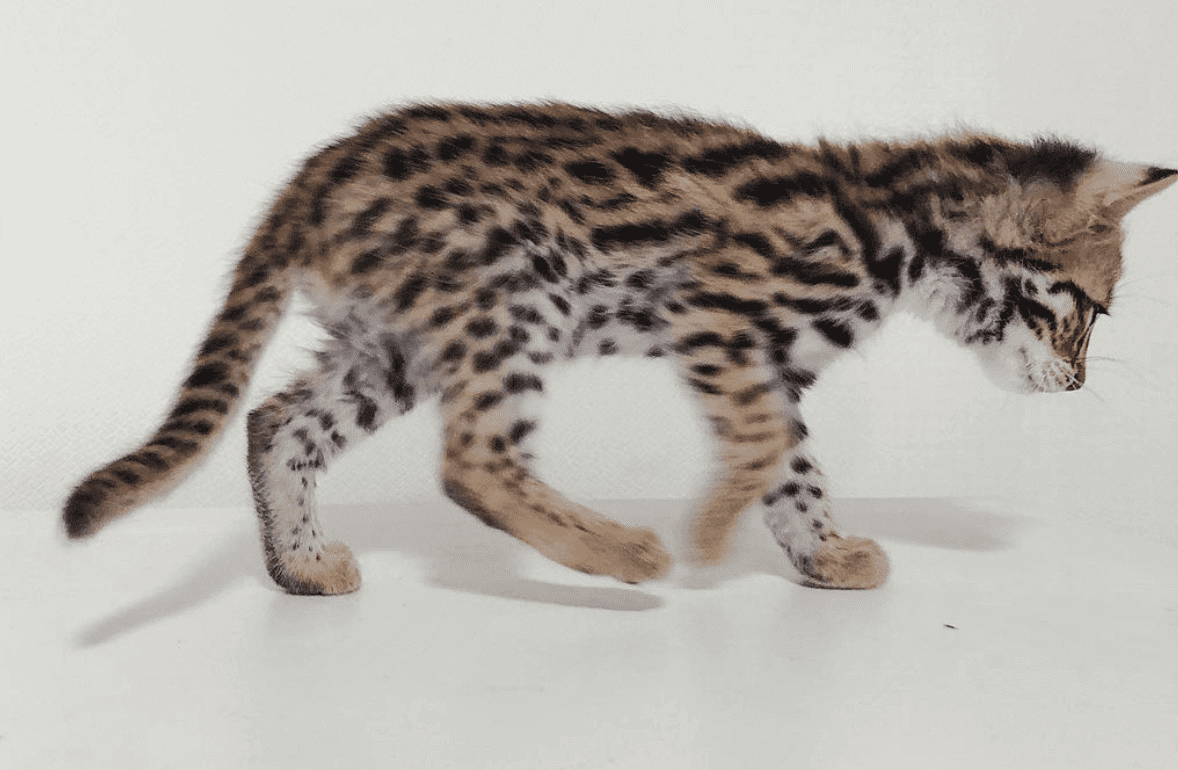The Asian Leopard Cat (Prionailurus bengalensis) is a small feline species found across South and East Asia.
These cats share their leopard-like spots with their larger cousins, but are more closely related to domestic cats than leopards.
The Asian leopard cat is the progenitor of the bengal cat breed and plays an essential role in Asian ecosystems.
Despite its wide distribution however, the conservation status of this species is nuanced.
According to the International Union for Conservation of Nature (IUCN), the species as a whole is listed as “Least Concern.” However, specific regional populations are critically endangered.
This post dives into the biology, threats, and conservation status of the Asian leopard cat.
What is the Asian Leopard Cat?
The Asian Leopard Cat is approximately the size of a domestic cat but is more slender, with well-defined webs between its toes and elongated legs.
Asian leopards can vary significantly in size based on their geographical location, with over 20 documented subspecies spanning Asia.
Distinguished by its tawny or silver-grey coat adorned with various black markings, this species has a highly adaptable nature.
They inhabit a broad range of environments, from tropical evergreen rainforests at sea level to subtropical deciduous forests at altitudes above 1,000 meters.
Subspecies like the Iriomote cat and the Tsushima leopard cat show regional adaptations that are both morphological and ecological.
While their average lifespan in the wild is 8–12 years, it extends to 10-13 years when in captivity.
Conservation Status
The International Union for Conservation of Nature (IUCN) classifies the Asian Leopard Cat as a species of “Least Concern.”
However, this broad classification can be misleading.
It tends to gloss over regional disparities in population health and doesn’t account for specific vulnerabilities that some subpopulations may face.
For instance, the Tsushima Leopard Cat, a regional subpopulation, is listed as critically endangered.
Also, genetic studies indicate varying levels of genetic diversity across different clades or genetic branches of the species. Low genetic diversity in some populations could make them more susceptible to diseases and lower their ability to adapt to environmental changes.
CITES, the Convention on International Trade in Endangered Species of Wild Fauna and Flora, lists Asian Leopard Cats in different appendices based on their geographic location.
Those found in Northern Asia are included in CITES Appendix I, requiring the highest level of protection, while those in Southeast Asia are in Appendix II, which indicates they are not immediately endangered but may become so without trade control.
Threats
One of the most pressing issues facing the Asian Leopard Cat is habitat fragmentation and loss.
Deforestation for agriculture and development has fragmented habitats, leading to reduced genetic flow and an increased risk of inbreeding.
Additionally, the cat is hunted for its fur, especially in China, where hundreds of thousands of skins were exported annually during the late 1980s.
The species is also targeted as poultry pests and are hunted in retribution, while illegal trade in body parts has been reported in countries like Myanmar.
Though the role of the pet trade in affecting Asian Leopard Cat populations remains a subject of research, stringent regulations are often in place to control the trade and ownership of these wild cats, particularly in the United States and the United Kingdom, which requires a DWA (Dangerous Wild Animal) license.
These regulations, which usually require special permits or are restricted to specific research or zoo settings, serve as a limiting factor on the pet trade’s impact on wild populations.
Conclusion
The Asian Leopard Cat is a species of significant ecological and cultural importance, contributing not only to biodiversity but also serving as the foundation for the Bengal cat breed.
Despite a general “Least Concern” conservation status, specific populations are under threat.
Habitat loss due to deforestation and agricultural expansion, along with localized instances of hunting, are widespread issues that could lead to declining numbers.
While the species as a whole may not currently be endangered, regional variations in threats and genetic diversity indicate that specific populations are at serious risk.
Photo attribution: Source
